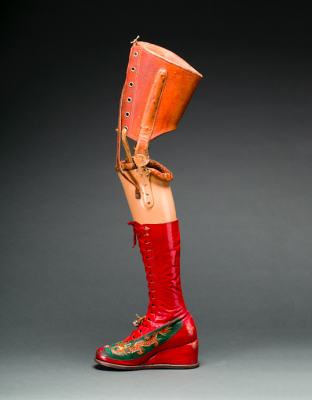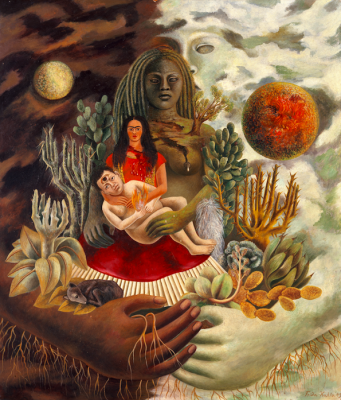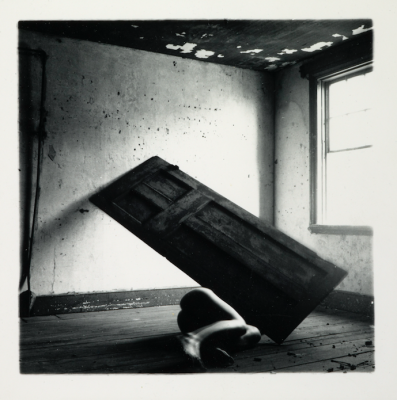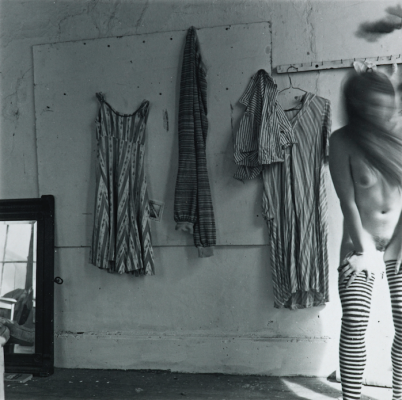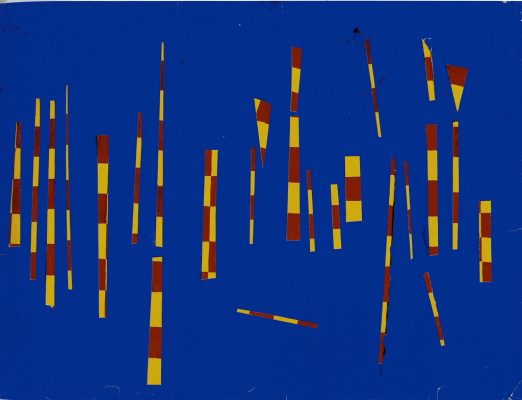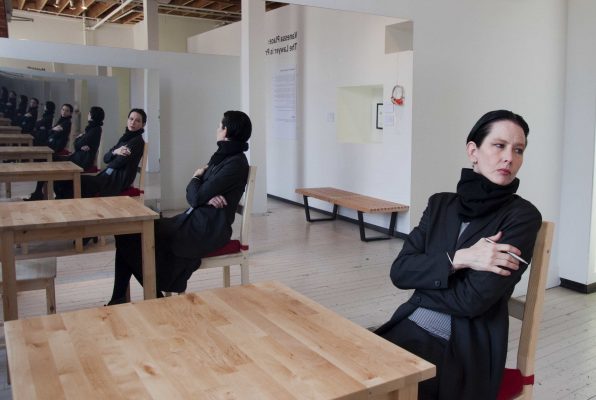The memorial for the artist was as inconclusive as her work, or anybody’s life. Organised haphazardly on Facebook by one of her old friends, it was held beside the ‘lake’ in Echo Park in the middle of a heat wave on a summer Sunday afternoon. For an hour after the appointed time, ten or twelve of us sat around in thin wedges of shade waiting to see if others would show up. But no one did.
— Chris Kraus, What I Couldn’t Write, 2016
While Julie Becker’s death rites were sparsely attended in 2016, the ICA’s 2018 summer retrospective of her work was one of many, much-discussed tributes in the UK to the art of dead young women. In May, Tate Liverpool mounted a bumper anniversary show of Francesca Woodman’s ‘intimate’ portraits, alongside the work of fellow doomed youth Egon Schiele. By the time of its close in November, the V&A’s display of Frida Kahlo’s paintings, together with her clothes, make-up and prosthetic leg, will have been consumed by visitors in the hundreds of thousands. This summer, almost fifty years since Linda Nochlin raised and responded to the question: Why Have There Been No Great Women Artists?, viewers have had ample opportunity to gorge on the artwork of consecrated women. A current problem seems to have less to do with a lack of women artists, or their invisibility, and more with the predominant status of these women as dead and, often, dead young.
From the Guardian to the Daily Mail, critics expressed resounding displeasure with the V&A’s ‘excessive adoration of a dead woman’s stuff’ borne out in its brazen display of ‘more pill bottles than paintings’ in its Kahlo exhibition. In the Guardian, Jonathan Jones found the decision to co-cast Woodman and Schiele on the basis of their shared premature demise to be ‘so shallow and patronising that it suggests Tate Liverpool has lost all respect for its audience’. We, the audience, are left only to ponder our facile, morbid attraction, both to these artists and to their ‘stuff’.
In the disproportion of dead-to-living women on show, there is an element of making up for lost time. For this, we can take at least some preliminary comfort in apportioning blame to our forebears. An important premise of Nochlin’s infamous essay was that, in 1971, there really had been no Great Women Artists. The rhetorical force in her question of why owed something to Nochlin’s evident scepticism about the notion of Greatness itself, which she was at pains to expose as a man-made construct. Behind the historical figure of the Greatness-encrusted creator – the man of innate and mysterious Genius – lay a specific educational framework that allowed such Genius to be cultivated. Behind that was a social substructure determining who was in a position to access the prescribed education in any meaningful way and then, crucially, to be recognised as having done so. While women had always been making art, their lives and works could never have conformed to the accepted rubric of Greatness that connected Michelangelo, Matisse and Malevich. At a moment when men were ‘kings’, as Kahlo put it, she painted at a small easel in the shadow of her husband Diego Rivera’s monumental murals. Her paintings were personal, her habits as a painter lacking in professional airs. It was not until what we might call the ‘post-Greatness’ era inaugurated by second-wave feminism that the work of women like Kahlo would even be taken up for valuation as anything approaching canon-ical. In the form of women, a new pool of candidates for appraisal flooded into the dawn of this era. It is only natural that the majority of those new candidates were, at that moment, statistically, dead.
But structural inequalities in the art world, as elsewhere, are stubborn evils. Unlike Kahlo, Woodman and Becker worked well into the thick of feminism’s second wave and its aftermath, in societies that were, and are, at least aware of women. Still, neither attracted as much attention in life as in their deaths, the dramatics of which throw our post-mortem preoccupation with their work squarely into the domain of the problematic. Together with our fixation on Woodman, who jumped out of the window in 1981, age twenty-two and only a few years into her career, and our delayed response to Becker, who died in 2016, aged forty-three, Kahlo’s status as a posthumous icon amounts in public conversation to something of a failure in decorum, rather than a testament to feminist progress. In a media culture dogged by its enduring taste for feminine victims and sadomasochistic excess, Kahlo’s plight stands for a kind of guilty pleasure – an overly alluring repository for bloodlust. Crippled at the age of eighteen when a streetcar collided with a bus she was riding, ploughing a metal handrail through her pelvis, she documented her body’s physical deterioration with sensational precision. Woodman’s photographic nudes, in turn, give a window onto youthful fragility; Becker’s installations onto material and psychological squalor. Viewed in these terms, it is as though the seamy texture of this year’s art sought to threaten not just the feminist credentials of those who succumbed, but even the baseline of moral dignity that generally stops them from collecting teenage girls’ pants. If, the argument goes, it is lamentable that we can only manage to celebrate women artists after they are dead, it is positively execrable that we cannot extend this interest much beyond the boundaries of biography. And only then if the life in question was adequately scarred by the sublime beauty of suffering, the thrilling romance of an early end.
Back in 2012, a commentator on Woodman worried in the Paris Review that ‘women artists are perpetually shoehorned into the “art as life” equation, their biographies dismissively used to explain their work.’ Death, quite literally the ultimate moment of biography (especially the grizzly kind), offers itself within this framework as a crude funnel into the woman artist’s core, acting out a denial that women’s work might be worthy of analysis at the more serious level of form. And yet, women’s encroachment on art has relied again and again upon their repudiation of precisely this kind of symbolic hierarchy – this systemic form-fest. When Kahlo grappled with experience and desire in self-portrait format, it meant that she could forge a new language of solidarity with women, but also with Mexican Indians, with those at the furthest edges of capitalism’s oppressive remit, with anyone in pain. While Rivera attempted to coax her into the kind of studio setting where he occupied himself with thoughts of unifying a novel form of revolutionary art, Kahlo was ferociously specific. Her assertive self-reflection suggested an alternative source of truth to the male ‘view from nowhere’, and in works of non-self-portraiture, she mined ordinary iconography with extraordinary force. The Bride Frightened at Seeing Life Opened (1943), on display at the V&A, is but one example of this achievement. A wide-eyed doll, posed in white, sways behind an overwhelming scene of banana shafts, husks of swollen coconuts and daggers of watermelon flesh. Kahlo’s bride glares back at Duchamp’s The Bride Stripped Bare by Her Bachelors, Even (1915–1923) with knowingly sexualised wit.
After Kahlo, women artists of the 1970s and 1980s avant-garde embraced a growing cavalcade of media and forms that lent themselves to biographical work. Woodman’s images of blurred female youths were made using a slow shutter to reveal the injuries of time, flesh fading in a single photograph. Performance, photography, video and film suggested deliberate ruptures of the medium-based order, as well as questioning such practical propper-uppers of the male Genius paradigm as the need for a studio. Still, the old order of Greatness has stuck around. In 2014 Victoria Miro Gallery attempted to rectify the recurring biographical interpretation of Woodman’s work by encouraging its audience to focus on her use of geometry, proper as such considerations are to a respectable modernist aesthetic. The exhibition was called Zigzag and saw everyone dutifully spotting the diagonals in each photograph, trying to ignore anything blazing too hard in the background with the proscribed subjects of life and death. This was considered by some to be feminism.
The art-as-life formulation remains vexed. Today, we may read Deborah Levy in the New Statesman making a bold second-person invitation to Kahlo to deny the modes of personalisation harnessed by those who followed her: ‘all art is a kind of performance, but I know you will agree, Frida, that it is exhausting to hang around an artist, or anyone else for that matter, who is performing all the time’. Reservations such as Levy’s with the art/life alloy share roots with Jonathan Jones’s aversion to having Kahlo’s belongings spread for his contemplation. ‘Tantalising glimpses of her artistic brilliance are overshadowed by her relics,’ he objects. It seems curious, in the wake of women’s successful weaponisation of biography to undermine noxious ideologies of pure, unexplained brilliance, that the hierarchies of medium and technique that have historically kept them out of the gallery should now be brandished in the name of feminism.
This might be explained, to some degree, by certain contemporary art world mechanics, which, since the 1970s and 1980s, have found new ways to press against biography’s flourishing in our perception of how art should be read. For a twenty-first-century artist such as Becker, the imperatives of the art world were clear: I must create a Master Piece to pay the Rent goes the title of her retrospective at the ICA. Installing empty fridge boxes (beds for the homeless) among floor plans of single-room-occupancy accommodation, Becker takes elements of her life in Echo Park and refracts them in a floppy cardboard hellscape. The Echo Park neighbourhood, site of that scrappy memorial described by Chris Kraus, is a crucible of rampant property speculation. Gentrifying forces have intervened in recent decades on what was once a predominantly Latino community, where artists and musicians without art school credentials could forge a promising network of insurgency. It also forms the backdrop for Kraus’s 2011 essay collection Where Art Belongs. Here, she documents a contemporary creative scene in which institutions of art and capital work in cahoots – in which school becomes essential, and art becomes illegible. In a jungle of foam and neon squiggles, MFA qualifications or similar are called in as a tool of valuation usefully removed from the work itself. In such a world, she suggests, ‘the artist’s own biography doesn’t matter much at all’. ‘What life?’ writes Kraus. ‘The blanker the better. The life experience of the artist, if channeled into the artwork, can only impede art’s neocorporate, neoconceptual purpose. It is the biography of the institution we want to read.’ It seems likely, in this context, that the feminist interest in life and biographical form has more to contend with than just patriarchal formalism.
But even when biography is given due respect, it is one thing to rehabilitate our fascination with dead women by invoking the value of an interest in their lives, and another to defend an interest in death itself. Particularly young death and its implication of darkness, of suffering, in a world where the pain of women can lay claim to a rich history of aesthetic endorsement. ‘Now that Woodman is dead,’ writes Ariana Reines in the Los Angeles Review of Books, ‘anybody is free to fantasise about the “her” unencumbered by the annoying intrusion of her actual existence’. Of the mannequins deployed by the V&A to model Kahlo’s dresses, Levy protests that ‘multiple grey plaster Fridas, trapped in a glass case, are uncanny and distracting. To be honest, they remind me of a scene in a zombie movie.’ In the case of each critic two distinct problems are implied: one of fetishisation; another of agency. Fetish: the word suggests adoration with irrational excess, in a climate of depoliticised fantasy. The fetishist uproots suffering from its context so as to focus on the pain itself in splendid isolation. To gaze with intent upon an artist’s life is then to ogle her suffering like Victorians basking in the elegance of a consumptive maiden. The tenacious appeal of the wan woman – given literary form in nineteenth-century reverence for the tubercular – is what Susan Sontag diagnosed as ‘the first widespread example of that distinctively modern activity, promoting the self as an image.’ Self-promotion, in Sontag’s idiom, serves to characterise a culture she critiques as narcissistic and sentimental. But if we are to acknowledge women’s self-portrayal in cultural forms as a weapon of de-marginalisation, then to flinch from displays of suffering becomes an act of erasure, rather than one of respect. Feminist use of biography works precisely to contextualise women’s art. As an audience, to extract women’s suffering from context for our own personal delectation constitutes a failure of attention, not an indictment of suffering’s portrayal.
Still, who calls the shots? Who decides if we erase or expose? ‘Frida,’ says Levy, ‘we do not know if you would have wanted any of these [surgical corsets] to be viewed as exhibits.’ Both she and Reines ask us to accept that if we insist on bringing the artist’s life into her work, we must also bring her will and judgment into the gallery with us as we go. At times Levy takes this fairly literally: ‘While we’re having this conversation, let’s smoke a cigarette. I have learned from this exhibition that you preferred to smoke Lucky Strikes.’ Unfortunately, when an artist is dead, the commitment to honouring her will is effectively impossible to fulfil, and its pursuit can end up summoning the opposite of its intent: the inadvertent feeling of dragging in a corpse – an exquisite, fragile thing to dangle inertly while we impose our wanton readings on the life that once belonged to it. Insinuation of ourselves and our meanings in such a way cannot help but feel perverse.
And sometimes it is. If a life is an arena on which to project unhelpful narratives, it is undeniable that an early death exposes a larger field for violation. It is just this order of violation that was clearly felt by protestors of the Whitney Museum’s 2018 summer exhibition of the work of David Wojnarowicz, who died aged thirty-seven in 1992 of complications from AIDS. Activist organisation ACT UP (AIDS Coalition to Unleash Power), of which Wojnarowicz was himself a member, demonstrated against the museum’s historicisation of the AIDS epidemic, its failure to embed the artist’s legacy in exposure of an ongoing, pandemic struggle. As for the work itself, Frieze magazine’s Evan Moffitt pointed to its sanitisation – how the retrospective made ‘oddly digestible Wojnarowicz’s address of truths difficult to swallow.’ Wojnarowicz’s was a dreadful rage, carried inside, as he put it, ‘like a blood-filled egg’. The Whitney’s hubris, it was felt, was its attempt to contain this rage, this blood, still further.
And yet an interest in the sufferings of a finished life need not imply an interest in violating the dead, nor in distorting their legacies. In Close to the Knives, published the year before his death, Wojnarowicz styles his art as ‘a ventriloquist’s dummy – the only difference is that the work can speak by itself or act like that magnet to attract others who carried this enforced silence’. In throwing savage experience into an arena outside of himself, Wojnarowicz was motivated precisely by the need for that testimony to range beyond the limits of his short life. Liberated from the strictures of biographical dates, the uses of such testimonies only multiply. In the case of Kahlo, the pliancy of her post-death role as a figure of empowerment for many and varied identities is perhaps one of her most remarkable qualities. Chicanx artists equip themselves with her image of strength as an emblem with which to brand their city walls, while feminists extrapolate, from her suffering, structures of female oppression. Queer activists seize on her suggestions of androgyny. None makes their interpretation at the expense of another, nor of the artist herself.
An artist’s silence in death becomes a problem when the power of the living to represent their work is abused. But to insist on an outright refusal to adopt and reframe the art of the dead is itself an abuse of art’s potential. More fundamentally, it represents a peculiar understanding of art’s communicative mechanics. A useful analogue to visual art’s handling of biography might be the literary tendency towards autofiction, popular now but as old, at least, as Marcel Proust. Often discussed in terms of female writers (Chris Kraus being a notable contemporary trailblazer, along with Maggie Nelson, Sheila Heti and Elif Batuman), the autofictive mode frames biographical material in fictional form. The tide of overtly biographical subject matter in novels of the last few decades has conjured a readerly anticipation of confession, rather than invention, in literary works. So much so that in August 2007 French writers Camille Laurens and Marie Darrieusecq found themselves locked in a public feud over Darrieusecq’s novel, Tom est Mort. The book relates a mother’s struggle with the death of her infant child, a tragedy suffered by Laurens herself and fictionalised by Darrieusecq. Accusing the author of ‘psychological plagiarism’, Laurens inadvertently publicised a growing confusion about the kind of ‘truth’ that fiction and autofiction are expected to convey. Her outrage spoke to an incipient misunderstanding of the biographical features of autofiction as valuable for their accuracy, rather than what they offer as literary material.
While the novel has always been appreciated for its truth-telling potential, the novel form is distinct from such non-fictional modes as history and biography specifically for its resistance to actual ‘truth claims’. The subjects of fictional literature may exist anywhere on a spectrum of the imagined and the real – a spectrum on which autofiction occupies one extreme – but it is not this relative degree of reality that makes a novel feel more or less true. While there is defiance in Kraus’s explicit self-reference in her novel I Love Dick (1997), the tale would be a gutting account of female debasement with or without the straight-up nomenclature, as the truthfulness of fiction hinges on the coherence of a logic internal to the work in question, not the factual accuracy of the events or people described. This distinction between fiction and non-fiction reaches as far back as the earliest surviving piece of lit crit, Aristotle’s Poetics, written in the fourth century BC. Known historical figures made ample fodder for the ancient tragedians, just as writers mine their own lives for material today, and yet this had no bearing on Aristotle’s taxonomy. He lauded poetic forms such as tragedy as higher and more profoundly philosophical than history, on the grounds that, while history presents us with the particulars of what has happened, poetry (read ‘fiction’) suggests the ‘universal’ by way of what could happen.
Woodman’s recourse to her own body as a model was, in her words, a matter of mere convenience. It is relevant that her subjects are female, perhaps also that they are young. But like the ‘Chris’ of I Love Dick, the ‘self’ Woodman captures in her work is as public as it is personal, at one moment bouncing up against her surroundings, at others disappearing into them. As with all art, Woodman’s is articulated in its own, self-consistent, vocabulary – never a matter of direct, individual expression. The language of art, as Nochlin put it, is ‘neither a sob story, nor a confidential whisper’. Understanding the relationship between the art and the artist in this way, the question of posthumous agency is reformed. Why ask whether the artist must continue to be present, if the artist was never strictly present at all?
Suppose, for a moment, that Tate Liverpool has not ‘lost all respect for its audience’, and that the choice to juxtapose two youthful ghosts implies more than cynicism or degenerate fancy. If art is to militate against the suppression of any marginal life, it seems reasonable to require that ‘life’ be one of art’s acceptable subjects and tools. If a marginal life includes, or even induces, an early death, it seems reasonable to require that we accept that too, however burdensome the potential charges of fetishism, bad feminism, or abuse of power. In fact, in the entropic atmosphere of this political minefield, there is something to be said for the clarifying qualities of a closed case.
Our love of the posthumous is Janus-faced: if its politics can be mixed, its powers of manifestation are munificent. While death at its most horrible might appeal to our most incontinent lusts, death in its definitive drawing of lines appeals to our measured concern for the fullest picture. ‘Count no (wo)man happy ’til the end is known,’ goes the ancient Herodotean adage – try not to clap before the curtain comes down. Counting ‘happiness’, for the Greeks, stood for a kind of ultimate reckoning – the most illustrious form of interpretation opening on to the highest kind of knowledge. Whether or not it is a human body or a body of work we want to ‘know’, there is interpretative value in the sense of an ending.
Becker’s major project, in continual, open-ended progress until her death was, ironically, entitled Whole. A constellation of ‘parts’, from yellowing corners in the artist’s bungalow to a model bank building hoisted through the ‘hole’ in her floor, the pieces in Whole have a jesting attitude to their own completeness. Across Becker’s ICA retrospective, many ‘parts’ issue a basic refusal to cohere. And yet, paradoxically, it is only in the context of a ‘life’s work’ that it is possible to identify this refusal in all its sad starkness. Once a curatorial tombstone has declared the artist’s work complete, it finds a new freedom to protest its incompleteness, and while it may be a narrative of fragmentation that rises from the artist’s dust, it is a narrative nonetheless – as venerable a concept to Hannah Arendt as to Herodotus. According to Arendt’s take on The Human Condition (1958), narratives ‘tell us more about their subjects, the “hero” at the centre of each story, than any product of human hands ever tells us about the master who produced it.’ Whatever the artist herself means to say with her work while absorbed in its making, she is never in a position fully to assess; it is over and after her life that the narrative crystallises or congeals. Kahlo’s revisionist styling of her own origins (at forty she shaved three years from her timeline so that her birth year could coincide with the Mexican Revolution), tells us more about the woman than her verified dates. The same could be said about tales of her end. The depth of meaning in which post-death storytelling has a stake, when applied to a body of work, is difficult to reject.
Woodman’s 1976 series of ‘ghost pictures’ summons fogs of flesh, girls floating in and out of the wallpaper like the spirits conjured by nineteenth-century seance photographers. Mechanical artifice helped Woodman to contrive a language of the unseen that made the relationship between living and dead one of visibility and concealment. In Arendt’s defence of narrative, it is this concealment against which she rails, along with the counter-tale that forges itself in the fantasy of immortality. Her paean to the retrospective hangs not only on truthfulness, but on memorial too. When Kahlo paints a fissure in her torso, she exposes the crumbling column of her spine – scraps of flesh and stone held together by a harness of nails and cloth. If the V&A puts the real harness on display, its darkened line of blood is only further testament to the painted figure’s tears. It may well be that we find some twisted pleasures in the art of these women and feel ashamed. But short of counting brush strokes or searching for Genius in the hard line, we are faced with the choice either to engage with the conditions of their suffering, accepting our own discomfort in the process, or to consign these women to the back catalogue of history, forgetting that they suffered at all.
